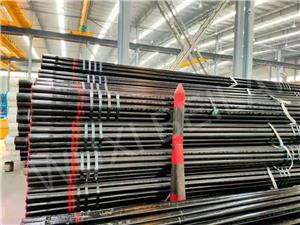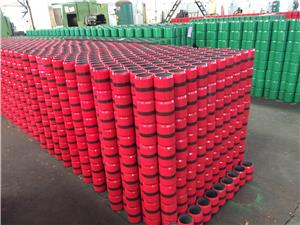How to test the hardness of boiler tube?
The boiler tube undertakes the important task of conveying working medium (such as water, steam, etc.) in the boiler system, and its working environment is harsh, which needs to withstand the test of many factors such as high temperature and pressure, corrosion and wear. Therefore, the hardness of boiler tube is one of the key indicators to measure its quality and service life. Hardness testing assesses the ability of boiler tubes to resist local pressure deformation, ensuring that they maintain stable structural strength and sealing performance under extreme working conditions. This is of great significance for preventing boiler tube leakage, rupture and other safety accidents.
Boiler tube hardness test method
There are many kinds of hardness testing methods for boiler tubes, including Brinell hardness test, Rockwell hardness test and Vickers hardness test. Each test method has its unique scope of application and advantages and disadvantages, and the specific selection should be considered according to the material, shape, size and test requirements of the boiler tube.
Brinell hardness test
Brinell hardness test is to apply a certain amount of pressure on the surface of the sample, and use a certain diameter of the steel ball or cemented carbide ball as the indenter, to form an indentation on the surface of the sample, and then measure the diameter of the indentation to calculate the hardness value. This method is suitable for the determination of indentation hardness of metal materials, and has the characteristics of stable and good reproducibility of test data. However, due to the large indentation, it may not be suitable for thin-walled boiler tubes or boiler tubes with higher surface requirements.
Rockwell hardness test
Rockwell hardness test is to use a diamond cone as an indenter, apply a certain pressure on the surface of the sample and maintain a certain time, measure the depth of the indentation to calculate the hardness value. The method is fast and easy to operate, and is suitable for the determination of hard metal materials such as hardened steel and cast iron. However, it should be noted that the Rockwell hardness test is sensitive to the roughness of the sample surface, so the sample surface needs to be properly treated before the test.
Vickers hardness test
The Vickers hardness test also uses a diamond cone as the indenter, but the indentation shape is square or diamond, and the hardness value is calculated by measuring the diagonal length of the indentation. The method has high test accuracy and is suitable for measuring the hardness of thin sample, small sample or surface coating. However, due to the relatively complex and time-consuming testing process, it may be limited in practical application.
Boiler tube hardness test procedure
The steps of boiler tube hardness test usually include sample preparation, test instrument calibration, test operation, data recording and processing and result analysis.
Sample preparation
A representative sample is taken from the boiler tube and processed and surface treated according to the standard requirements. The surface of the sample should be smooth and smooth, without cracks, inclusions and other defects, to ensure the accuracy of the test results.
Test instrument calibration
Calibrate the selected test instrument before the test to ensure that the accuracy and stability of the test instrument meet the standard requirements. The calibration process should be carried out in strict accordance with the instrument instructions or relevant standards.
Test operation
Place the sample on the workbench of the test instrument and operate according to the selected test method and standard. During the testing process, attention should be paid to controlling the size of the applied pressure and the length of the holding time to ensure the accuracy and reliability of the test results.
Data recording and processing
Record the test data in time during the test, such as indentation size, applying pressure, etc. After the test is completed, the data is processed and analyzed, the hardness value of the sample is calculated, and the standard value is compared to evaluate its quality level.
Result analysis
According to the test results, the hardness properties of boiler tubes are evaluated and analyzed. If it is found that the hardness value does not meet the standard requirements or there is abnormal fluctuation, the cause should be found in time and the corresponding measures should be taken to deal with it.




